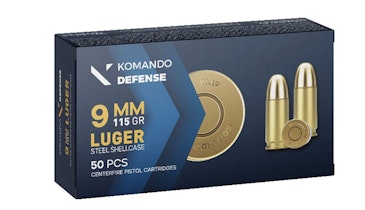For a transaction to happen, you need four things: a buyer, a seller, a product, and a means of exchange. To sell to the government, that means of exchange is some form of procurement vehicle, be it the two we discussed in the last article or several other options I’ll introduce in this installment. Absent a means to legally conduct the financial transaction, it’s impossible for you to do business with the government.
Last time we went over the Government Purchase Card program, which uses Visa credit cards to facilitate payments of $10,000 or less, and the much more complicated System for Award Management process, which involves providing competitive bids for goods and services. Now let’s go over some other options.
You may have heard of a “GSA schedule contract,” which is a standing, indefinite quantity, indefinite delivery opportunity to sell your offering to the government. It’s currently hosted on a website called GSA Advantage. Interestingly, some local and state agencies also have access to GSA Advantage.
One of the issues that trips up many businesses, both large and small, is that the pricing structure offered to GSA and its customers must be your best price.
Due to the relative complexities of establishing a GSA Advantage account, there are numerous companies who will help set you up, for a fee. Its offerings have become quite vast, with competition among the participants. Consequently, if you’re a part of the program, you can’t just sit back and wait for the money to roll in. You’ve still got to educate customers on the program and your participation.
There’s a category of government procurement commonly referred to as “set-asides” with two types: competitive set-asides, and sole-source set-asides. The first limits competitive bids to just small businesses (generally 500 employees or less), which, along with sole-source contracts, are used to help meet small business contracting goals. There are several other ways they work toward that goal, which I’ll mention later in the article.
One facet of set-asides is known as directed sourcing, and this occurs when a commodity item is purchased from a disadvantage business like the AbilityOne program, which is a group of businesses employing the handicapped. You may have also heard of National Industries for the Blind and Source America. Collectively, they do over $4 billion per year in business with the federal government.
While AbilityOne businesses often manufacture goods in the U.S., they are also relied upon for kitting, which assembles many items into prepackaged kits for use by the government. They, along with other organizations which employ the differently abled, also operate supply stores on military bases that only accept GPCs and, in some cases, other forms of government payments. Working as a sub-contractor for these businesses is another means to sell indirectly to the government.
A sole-source contract is a directed buy from an individual company. This is generally used as a convenience to the government because the business offers something they can’t get anywhere else.
You’ve likely seen the term Service Disabled Veteran Owned Business, a certification bestowed on small businesses by the Small Business Administration based on a Veterans Administration disability rating. There is also a category for a Veteran Owned Business. In fact, the SBA has several programs to help veterans you should check out if it applies to your business.
Additionally, the SBA aids businesses owned by women, those located in HUBZones and another category called 8(a) businesses.
HUBZones are geographical areas with defined borders which are historically underutilized for business. The federal government has a goal of awarding at least 3% of federal contracts to businesses within HUBZones, so where you locate your business can be lucrative. Although HUBZones have traditionally been urban in nature, the SBA is expanding their use to rural areas.
Small businesses categorized under the 8(a) Business Development Program must be 51% owned and operated by individuals who are socially and economically disadvantaged, generally women and minorities. However, there is a nine-year limit on use of the category since the goal is to develop these businesses.
The federal government also issued numerous multi-year contracts to facilitate the purchase of various commodities. One that many in our industry are familiar with is the Defense Logistics Agency’s Special Operations Tailored Logistics System program. There are currently four companies involved in this 10-year contract that boasts a $33 billion ceiling. Military units and federal agencies submit requirements for equipment to the program, and each of the vendors are solicited for price submissions. Customers benefit from a competitive business model to offer the best value for the customer, which also gets the latest equipment, just in time, at the scale required without the added time and cost of traditional contracting or government equipment warehousing and distribution.
Once again, your company can serve as a vendor to this program and others like it. It’s best to contact TLS vendors to let them know you’d like to participate. Expect negotiations for best pricing, which the program participants are required to pass on to the government.
This is a pretty comprehensive introduction to federal contracting opportunities. However, it’s by no means exhaustive. Make sure you visit SBA.gov for more detailed information on these and other opportunities.
Once again, if you’re interested in selling to local and state governments and their various agencies, it’s best to contact your local Chamber of Commerce or state small business liaison for guidance.






